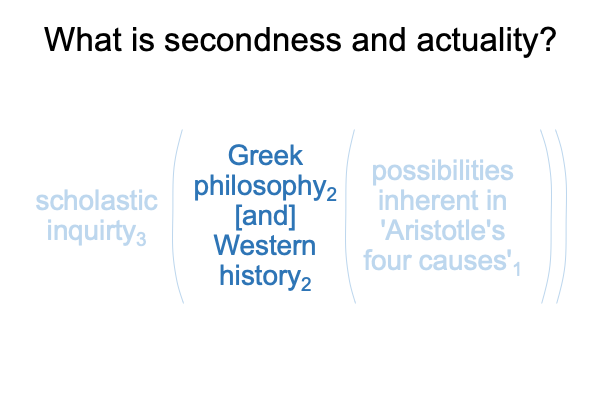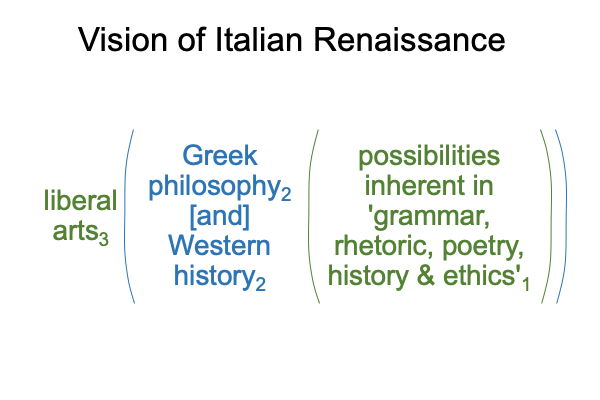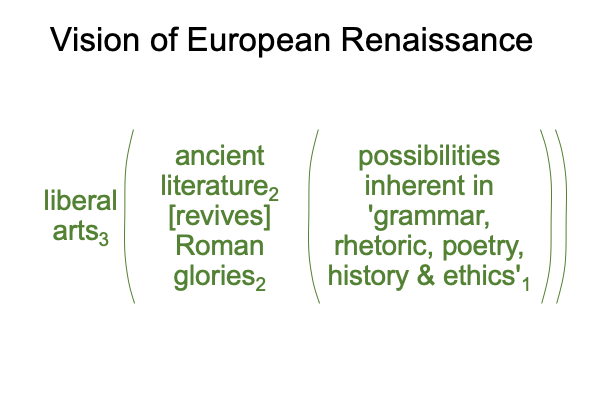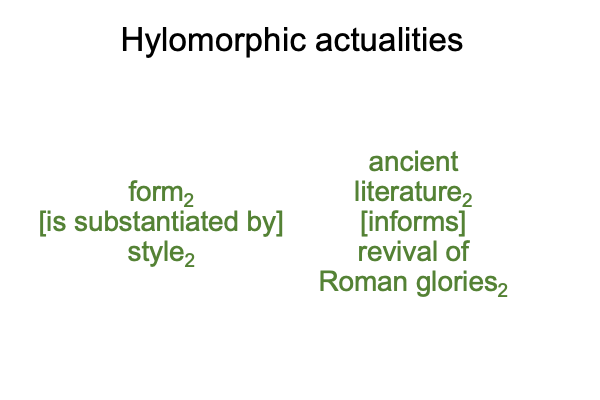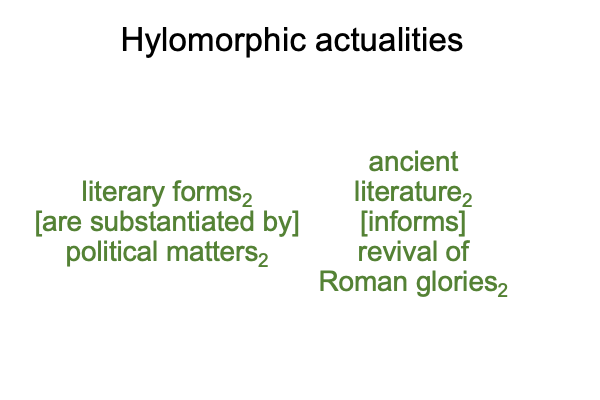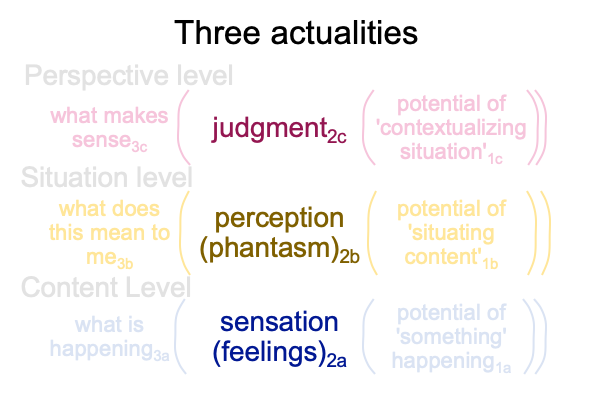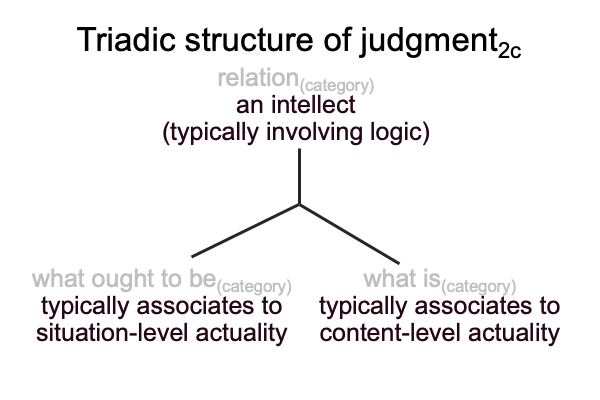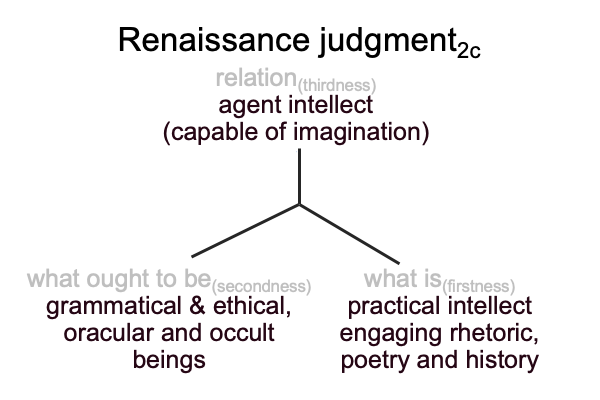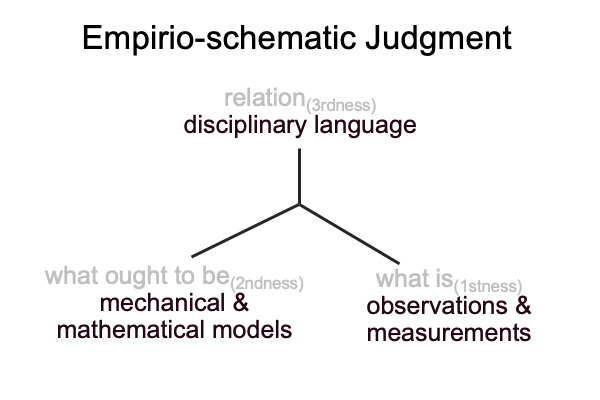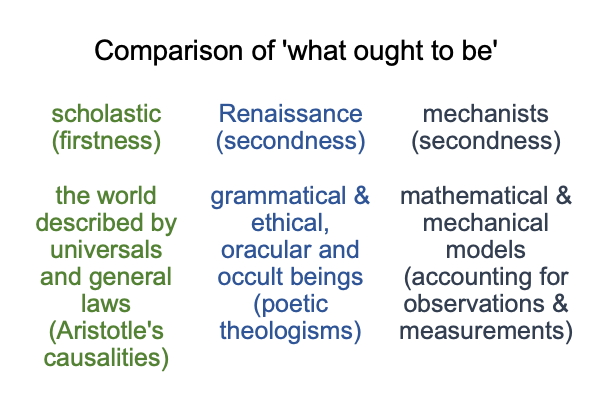0043 The Christian listens to ancient Greek myths and chuckles.
Why?
After the passing of a civilization, tragedy sounds like comedy.
Who takes the story of the birth of Athena seriously?
The educated humanists do. There must be a deep grammar and an ethical lesson in this ancient myth that makes it… um… less funny.
0044 The Renaissance humanists calculate that the elevation of poetry will change the first attitude into the second. They take themselves seriously. They only laugh in derision at naive Christians.
0045 The questions posed (and answered) by Renaissance humanists speak to their agenda. Is Moses the first poet? Is religion originally monotheistic? Do the ancient Greek poets descend from Moses? Does Plato encapsulate both Homer and Judaism? What if idolatry arises from a forced worship of the dead? Do the ancient poets couch their monotheistic principles in esoteric language? Does poetic knowledge elevate a human towards the divine? Do the works of ancient philosophers contain hidden revelations for Christianity?
0046 Ah, I am beginning to appreciate how the Renaissance liberal arts neglect to potentiate logic.
Nothing here makes sense, except as an alchemic digestion of the scholastic model of the human mind1 by the pentagrammatic disciplines1 in the normal context of the liberal arts3.
0047 By the time of Ficino’s Platonic Academy (7226-7275 U0′), the oracular and the occult coagulate. Wise and holy men and women of all traditions are reclassified as priests, priestesses and philosophers. The alchemic vessel swells to enclose Hebrew prophets, Persian Magi, Egyptian astrologers, Hindu Brahmins, ancient Greek poets, Celts, Romans and early Christian bishops.
What about Jesus?
Christ is a body of knowledge, a repository of divine ideas, suitable for intellectual appropriation by the students of Ficino’s institution.
0048 Next, the Gutenberg press dramatically lowers the cost of producing and disseminating this premasticated knowledge.
Polydore Virgil (7270-7355), traces the origins of philosophy to Moses, on the authorities of Eusebius (Christian bishop, 6063-6139) and Porphyry (Platonist, 6034-6104). His “reference book”, De Inventoribus Rerum, goes through thirty editions.
0049 Yes, a hidden system of knowledge is recovered from the dissolution and precipitation of Christendom in the digestive vessel of the Renaissance.
Greek philosophy [revives] Western history2 emerges from the possibilities inherent in ‘grammar, rhetoric, poetry, history and ethics’1, in the normal context of the liberal arts3.
0050 Nothing here has to do with logic.
Nothing stands as a small flaw in the fabric of the pentagrammatic disciplines.
Who exploits that flaw?
The mechanical philosophers.


